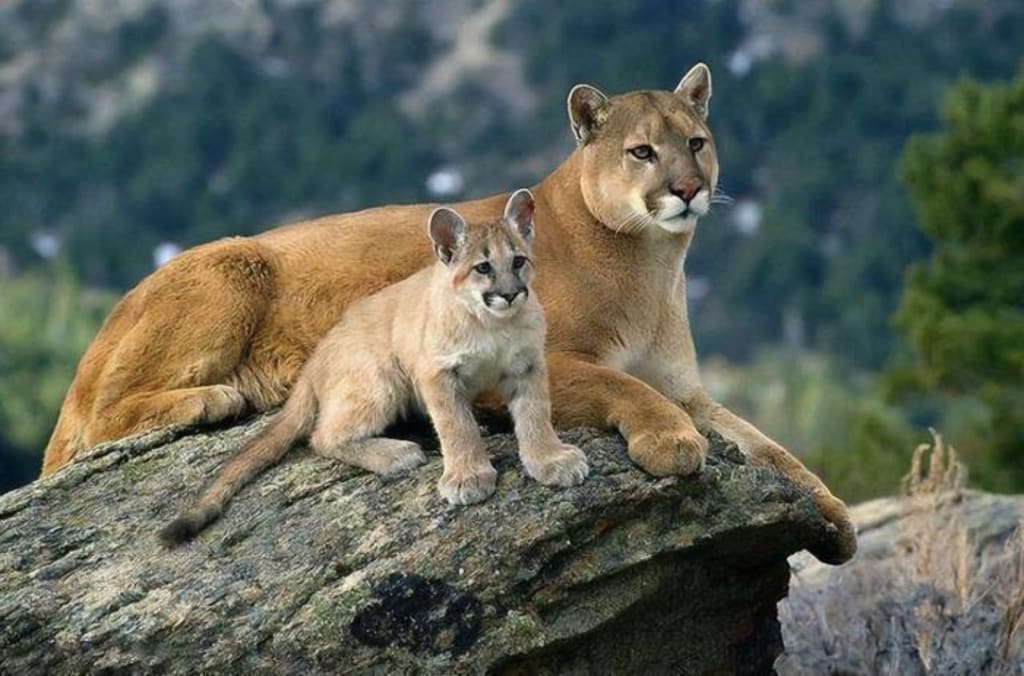9 DNA-tested ancient objects: old chewing gum, glowing manuscripts, mummies, dental plaque and more
What are the 9 ancient objects that have been DNA tested?

DNA tests on rodents, such as this one at Joshua Tree National Park, offer clues about ancient ecosystems
DNA contains the biological instructions that drive the existence of every living organism, shaping the world as we know it. With the help of advanced technology, these complex molecules can also reveal the secrets of people and other creatures long before us. Scientists have studied DNA preserved in a range of centuries-old artifacts, from human remains to fossils from rodent dens to pages of medieval manuscripts.
Illuminated manuscript
Here are eight DNA-tested objects that hold fascinating revelations about the history of life on Earth.
(old chewing gum)
Thousands of years ago, the ancients of Scandinavia used to chew on birch pitch, a sticky substance produced by heating birch bark. The gum was used as an adhesive for making and restorative tools, and may also be used to treat dental disease. Because of birch's antiseptic properties, scientists were recently able to sequence the complete human genome from a piece of birch pitch that was chewed and spat out in southern Denmark some 5,700 years ago.
The chewer is a female with dark skin, black hair and blue eyes. She may not be able to digest dairy products. Trapped in the gum was the genetic material of her most recent meal, duck and hazelnuts, and the DNA of bacteria and viruses stashed in her mouth. This study shows how valuable birch pitch was to researchers, especially in ancient times when few human bones survived; by extracting DNA from a small piece of discarded chewing gum, scientists were able to glean information about female hunter-gatherers A wealth of information on your appearance, diet and health.
(fecal bacteria)
In 1996, an urban development project in Namur, Belgium, uncovered an archaeological treasure: there were numerous toilets filled with medieval human faeces. By sequencing the genomes of viruses in fossil dung or coprolites, researchers can gain new insights into the gut health of medieval defecates, if we stay scientific about it. In fact, their feces have more genetic diversity that protects gut bacteria from antibiotics and toxic compounds, suggesting that our guts have become less hardy with the advent of food and water hygiene.
Because feces are full of microbes, they tend to break down quickly. But when coprolites do appear in the fossil record, they can tell fascinating stories about the people, animals and other creatures that once inhabited the planet. Last summer, the oldest known parasite DNA record was deposited in mountain lion feces in the Andes 17,000 years ago. The big cat was in business thousands of years before humans arrived in the region, disproving the theory that Toxocara lion, first infiltrated the guts of American carnivores through contact with humans and their domesticated dogs and cats.
(luminous manuscript)
Historians often value centuries-old manuscripts for their text and beautiful illustrations—but recent research suggests that these precious texts may also be a treasure trove of DNA. Scribes in the past often wrote on parchment made of animal skins, and the administrator would periodically erase the manuscript parchment with an eraser. A team led by Matthew Collins of the Universities of Cambridge and Copenhagen collected scraps erased from the York Gospels, a religious text believed to have been written in Britain around 1,000 years ago, and studied them using high technology Genetic Analysis Methods.
Scientists have discovered that the parchment is mostly made from the skin of female calves - a curious finding since breeders would have expected female calves to mature and produce more offspring. Researchers believe the calves likely died from a rinderpest known to hit the British Isles in the late 900s AD. It's not just animals that have made their mark on the York Gospels; the pages containing the oath are especially full of human microbial DNA, probably because they are often handled and kissed by the clergy.
(human skeleton)
Skeletal remains provide us with the most direct connection to Earth's past inhabitants. Experts can gather a wealth of information about an individual's age, gender and health by looking at bones, but advances in the analysis of DNA preserved in bones are opening up important new avenues of discovery. For example, a genetic study helped resolve a long and bitter conflict over the Kennewick man, one of the oldest and most complete skeletons found in North America. After the discovery of the 9,000-year-old remains, Native American tribes and tribal confederations demanded that the bones be returned to them for ritual burial; however, some scientists believe that the Kennewick people cannot be definitively linked to extant tribes. In 2015, DNA analysis obtained from skeletal hand bones proved that the Kennewick Man was indeed Native American. Two years later, his bones were retrieved and buried by members of five tribes.
DNA has also played a vital role in helping experts identify Richard III's bones, which were unearthed in 2012 under a city car park in Leicester, England. The key to this archaeological case is mitochondrial DNA, or mtDNA, which is passed down from mother to child. By painstakingly tracing an all-female lineage in Richard III's family tree, the researchers were able to match the mtDNA of the two living offspring to the mtDNA of the skeleton -- suggesting that the remains did indeed belong to the infamous king.
(rodent group)
Like their modern counterparts, rodents from thousands of years ago were resourceful nest builders. They collected bits and pieces from the surroundings and sealed the hodgepodge with their urine, which in turn acted as the glue that preserved the rodent habitat for tens of thousands of years. These nests (or nests) are packed with plants, insect parts, bones, droppings and other materials, providing a snapshot of the local environment at the time of nesting. Middens also contain DNA, which scientists have been able to analyze.
One discovery came from a cave in southwest Argentina where experts discovered "a unique fecal deposit" left by vizcacha, a rodent belonging to the chinchilla family. Mitochondrial DNA revealed that the feces came from extinct ground sloths that once roamed the area. In a more recent study, scientists randomly sequenced DNA fragments from 25 samples ranging in age from 300 to 48,000 years old. Researchers have discovered genetic evidence for everything from bacteria to insects to roses, allowing them to gain new insights into ancient ecosystems.
(tooth and plaque)
Because the enamel that coats our teeth is 97 percent mineral, human teeth are stronger than bone and more likely to survive in the archaeological record. DNA sequences from the teeth of our ancient ancestors are crucial for experts to understand the human family tree. For example, in 2010, genetic material from a wisdom tooth discovered in Siberia helped scientists identify Denisovans, a little-known group that shares a common ancestor with Neanderthals and Homo sapiens.
It's even better if the teeth are covered with plaque (though the dentist may disagree). If you don't brush your teeth regularly, plaque hardens into a substance called calculus, which begins to fossilize while we're still alive. The sticky substance can trap food, bacteria and DNA - about 25 times more DNA than bones or teeth themselves. In 2017, scientists announced they had sequenced the genome of a microbe stuck in Neanderthal plaques. The microbe, Brevibacterium methanosarcina, appears to have been exchanged between Neanderthals and anatomically modern humans, suggesting that some sort of hybridization-like link occurred. .
(mummy)
The ancient Egyptians took great care to protect the corpses of the dead, so scientists once worked hard to extract DNA from mummified remains. Egypt's sweltering climate, and possible embalming process, is thought to have destroyed genetic material - but the application of new sequencing techniques has shown that DNA was indeed present in the bones and teeth of ancient mummies. For example, genetic material from the molars of two mummies buried side-by-side indicates that the deceased were half-brothers; they had the same mother, but possibly different fathers.
From a colder place on Earth is one of the most famous mummies in the world: Oates the Iceman, who was murdered and died in the Italian Alps some 5,300 years ago. Oates' body was naturally mummified in cold climates, and genetic material from his pelvic bone helped scientists create a near-complete DNA sequence that revealed 'Iceman' may have brown eyes, lactose intolerance and genetic predisposition to heart disease. The researchers also tracked down some of Oates' very distant living relatives. Nineteen people in Austria have been found to have a unique genetic mutation, just like the mummy Oates.
edible plants
Certain fruits, vegetables and grains have made the long journey from their wild origins to the modern plate, and DNA analysis can help scientists trace the tortuous path of crop domestication. The evolution of corn, for example, began in Mexico about 9,000 years ago, when farmers began to select for the favorable traits of a small, tough plant called teosinte. But by looking at the DNA of 11 ancient plant species and the genomes of 100 modern maize species, the researchers found that "primitive maize" was brought to South America before the domestication process was complete, with stages like this occurring in multiple locations simultaneously.
Watermelon leaves found in a 3,500-year-old Egyptian tomb tell an equally fascinating story. Wild watermelons are not particularly tasty compared to their domesticated cousins. Their flesh is white and bitter. But partial genome sequences from ancient leaves showed that a gene that determines this bitter taste has malfunctioned, as has a gene that sees the red pigment lycopene converted into another substance. In other words, watermelons were domesticated at least 3,500 years ago—the ancient Egyptians ate the sweet red fruit as we know it today.
About the Creator
sayre laylah
Tired of monotonous climbing moves, but every step is close to the top
Enjoyed the story? Support the Creator.
Subscribe for free to receive all their stories in your feed. You could also pledge your support or give them a one-off tip, letting them know you appreciate their work.





Comments
There are no comments for this story
Be the first to respond and start the conversation.